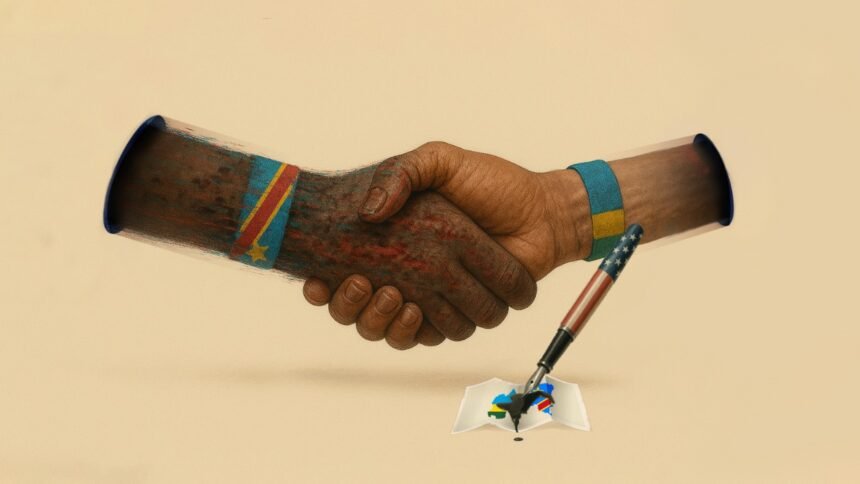It’s not every day that the Democratic Republic of the Congo (DRC) and Rwanda shake hands—figuratively or literally. Yet, in a conference room dotted with stern faces and cautious optimism, both countries inked what diplomats are now cautiously hailing as a major peace breakthrough. Brokered by Washington, this new agreement aims to halt years of conflict in eastern DRC—one of the world’s most volatile and mineral-rich hotspots.
To outsiders, the handshake might look like just another photo-op in the endless cycle of African summits. But to anyone who’s watched the M23 rebellion displace millions and fuel regional animosity, it signals a rare flicker of hope.
The conflict’s roots stretch deep. The DRC accuses Rwanda of backing the March 23 Movement (M23), a rebel group that has wreaked havoc across the eastern Kivu provinces for over a decade. Rwanda, in turn, insists it is simply protecting its borders from armed groups linked to the 1994 Rwandan genocide. Somewhere in the middle lie vast mineral reserves — coltan, gold, tin — and thousands of traumatized civilians caught in the crossfire.
The latest deal, reportedly containing provisions for demobilizing rebels, monitoring cross-border movements, and joint economic initiatives, is ambitious. It also comes with American fingerprints all over it. The U.S., long wary of China’s economic rise in the region and Russia’s expanding influence via Wagner-type contractors, has a clear interest in stabilizing central Africa and maintaining its leverage.
Still, skepticism runs high. After all, this isn’t the first time peace has been promised. Numerous accords over the past 20 years have crumbled under the weight of broken promises, proxy conflicts, and deep-seated mistrust. What makes this one any different?
For starters, both countries are facing pressure at home. The DRC’s President Félix Tshisekedi is under fire for failing to secure the east despite military offensives and regional partnerships. Meanwhile, Rwandan President Paul Kagame, once hailed as a post-genocide savior, is navigating increasing scrutiny from the West over his regional interventions and domestic crackdown on dissent.
What makes this moment unique, perhaps, is mutual fatigue. “Both sides are realizing that endless war isn’t winning hearts, land, or legitimacy,” says Jean-Paul Mvemba, a Kinshasa-based political analyst. “And with the global spotlight back on Africa, thanks to rare earth minerals and superpower competition, the cost of conflict is growing.”
There’s also the looming presence of China, which has pumped billions into Congolese mining projects and infrastructure. Beijing’s model — cash for resources, no political strings attached — has made it a preferred partner for Kinshasa. But its non-interventionist stance means it won’t police rebel activity or cross-border raids. That vacuum gives the U.S. an edge as a political mediator, but also places the burden squarely on its shoulders to make sure the ink on this deal doesn’t fade by the time the headlines do.
Not everyone is optimistic. Many Congolese citizens remain bitter about foreign involvement. “We’ve seen Western mediators come and go while our homes burn,” said a teacher in Goma. “Unless these agreements reach our villages, they mean nothing.”
And then there’s M23. The group, still active and emboldened, has yet to show signs of demobilizing. Without credible disarmament, the deal could amount to little more than ink-stained paper. That’s why enforcement mechanisms — like third-party monitors and international observers — are being debated fiercely behind the scenes.
Even within Rwanda, not everyone is on board. Some military hardliners see eastern DRC not as a neighboring nation, but as a vital buffer zone — one they’re not eager to give up. That’s why quiet whispers suggest this deal might be more of a tactical pause than a genuine truce.
Still, the very existence of the agreement marks a symbolic step forward. For the U.S., it’s a diplomatic win in a region where influence is hotly contested. For the Great Lakes region, it’s a tentative move toward peace, however fragile.
The true test lies ahead. As one Congolese priest put it, “We’ve seen signatures. We’ve seen ceasefires. What we need is silence — the silence of no gunfire, no crying children, no running. That’s when we’ll believe.”










